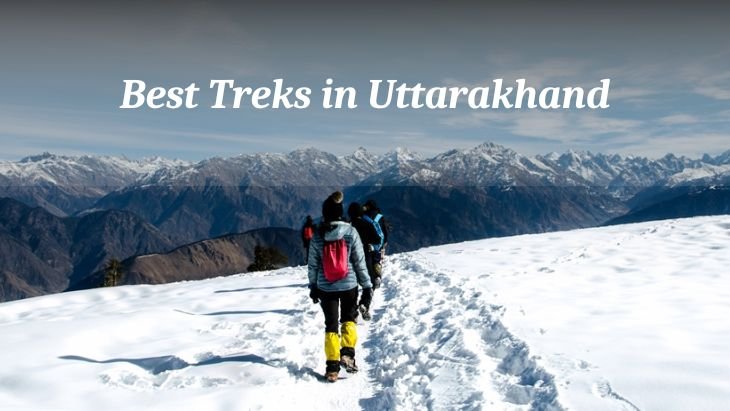15 Things to Carry On Trekking
Trekking is an enjoyable way to discover the natural world, test your physical capabilities, and bring back a connection with the great environment. The right materials are essential for a safe and enjoyable trek, regardless of experience level. Here, we will explore 15 things to carry on trekking.
- 1. Backpack
- 2. Trekking Shoes
- 3. Clothing Layers
- 4. Trekking Poles
- 5. Navigation Tools
- 6. First Aid Kit
- 7. Water Bottle or Hydration System
- 8. Portable Food
- 9. Multi-Tool or Knife
- 10. Flashlight or Headlamp
- 11. Emergency Shelter
- 12. Sunscreen or Sunglasses
- 13. Insect Repellent
- 14. Trash Bags
- 15. Trekking Permit and Identification
- 15 Things to Carry On Trekking
15 Things to Carry On Trekking
1. Backpack:
The basis of your trekking equipment is a strong, lightweight backpack. Try one with multiple spaces, a comfortable fit, and a capacity of 30 to 50 litres. Your backpack should be strong, waterproof, and include adjustable straps to properly distribute weight.
2. Trekking Shoes:
Purchasing quality trekking boots is essential. Choose shoes that are breathable, waterproof, and provide good ankle support and grip. During your walk, wearing the right shoes can help avoid irritation, sprains, and other foot-related issues.
3. Clothing Layers:
Trekking can happen in a variety of weather conditions. Carry an outer layer that is waterproof, warming mid-layers, and lightweight, breathable base layers. This will help you to adjust to changes in temperature and maintain your comfort and cleanliness during your journey.
4. Trekking Poles:
Trekking poles improve balance, reduce knee pain, and give stability on different surfaces. As they can be adjusted to different track situations and user high places, adjustable poles are recommended.
5. Navigation Tools:
an effective map, compass, or Navigation device is important for maintaining your direction. Having these tools with you means that you can navigate with confidence, especially in rural locations, even if you’re following a marked track.
6. First Aid Kit:
An important part of your trekking equipment should be a small first aid pack. Add medicines like painkillers, band-aids, antiseptic wipes, blister treatment, and any personal prescription medications. Minor injuries can be prevented from developing into serious issues by being prepared to handle them.
7. Hydration System or Water Bottle:
Trekking demands you to stay hydrated. Always have a minimum 2-litre water bottle or hydration system with you. To ensure safe drinking water from sources that are natural, think about using a portable filter or tablet water purifying system.
8. Portable Food:
Pack high-energy, low-weight food to sustain your energy levels, like energy bars, nuts, and dried fruits. For longer hikes, consider using freeze-dried meals, which are simple to make and supply essential nutrients.
9. Multi-Tool or Knife:
These tools can be extremely helpful for a variety of jobs, such as cutting rope and cooking. Choose a strong, small tool that has all the necessary functions, such as a screwdriver, knife, and scissors.
10. Flashlight or Headlamp:
When it is necessary for secure travel. Select LED lights with a long battery life and adjustable brightness. Keep in mind to bring extra batteries.
11. Emergency Shelter:
In the case of unexpected weather-related delays or changes, a warm blanket, lightweight tent, or bivy bag can serve as an essential source of protection. These little things have a big impact in an emergency and are very helpful.
12. Sunglasses and Sunscreen:
Carry sunscreen with a high SPF and Ultraviolet-blocking glasses to protect yourself from the harmful effects of UV rays. Trekking can be significantly affected by sunburn and eye strain, particularly at greater heights.
13. Insect Repellent:
In addition to becoming irritating, insects can spread disease. Apply insect repellent, preferably including DEET, to prevent insects and reduce the chance of getting bitten, especially in tropical or forest regions.
14. Garbage Bags:
Use garbage bags to pack out all of your waste so that you leave nothing behind. Food wrappers, used tissues and other materials that are not biodegradable come under this category. Make sure to leave the path as clean as you found it to show respect for nature.
15. Identification and Trekking Permit:
Keep your identity documents and trekking permit with you at all times. Having your ID on hand is important in case of emergencies or for identification at checkpoints, as some trekking routes require permits.
Having these 15 trekking essentials with you will guarantee that you’re ready for any outdoor adventure. With the right equipment, trekking through forests, mountains, or along seaside pathways can be safer and more fun.


Post Comment